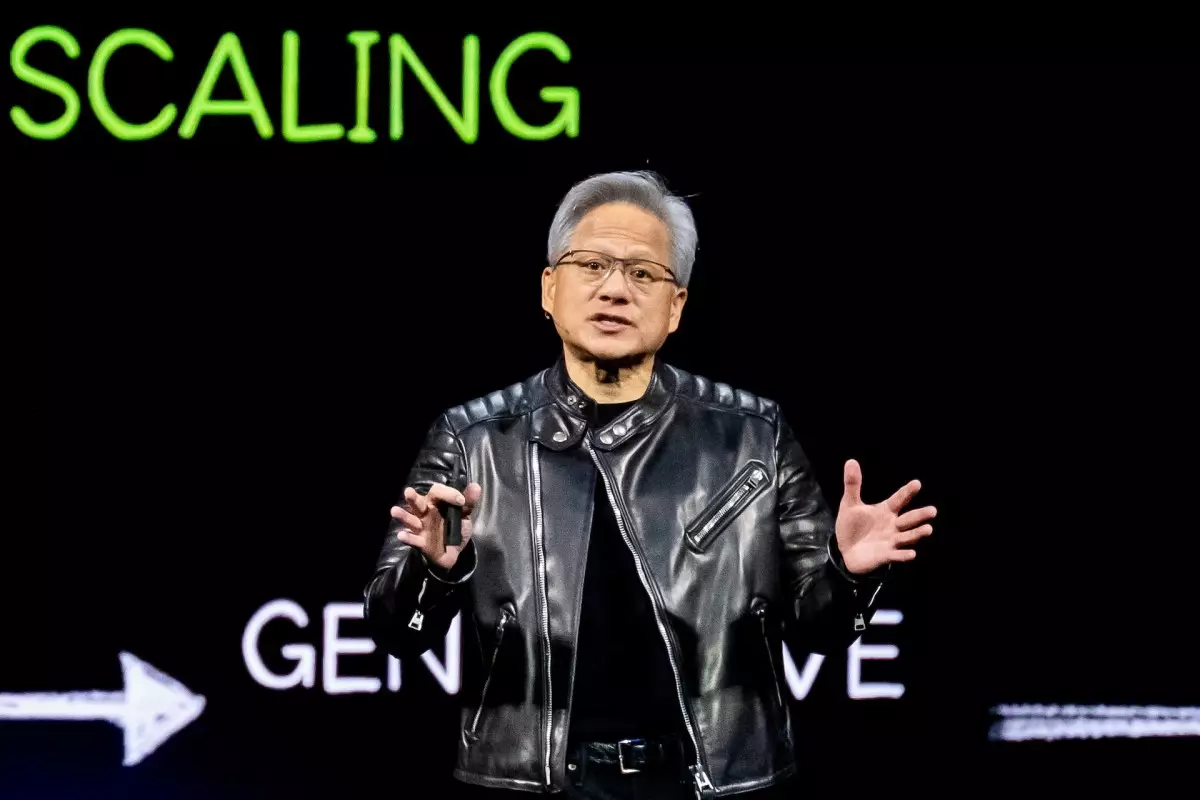In a significant move that reflects the evolving landscape of technology and manufacturing, Nvidia announced its plans to establish over a million square feet of manufacturing space dedicated to AI chip production in Arizona and Texas. This strategic initiative aims to relocate a substantial segment of its chip production to the United States, a process that not only symbolizes national pride but also responds to the urgent global demand for advanced AI technology. The company has already commenced production of its innovative Blackwell chips at TSMC’s facilities in Phoenix, Arizona, signaling the beginning of a new chapter in U.S. semiconductor manufacturing.
The creation of “supercomputer” manufacturing plants in Texas, in partnership with global giants like Foxconn in Houston and Wistron in Dallas, showcases Nvidia’s intent to cement its status as a leader in AI technology. With expectations that mass production will ramp up within the next 12 to 15 months, Nvidia is gearing up to contribute significantly to U.S. AI infrastructure—projecting a breathtaking half-a-trillion dollars of production over the next four years.
Strengthening Supply Chains With American Ingenuity
Nvidia’s expansion is poised to reshape supply chains and fortify domestic manufacturing capabilities. As stated by CEO Jensen Huang, the act of building AI infrastructure in the U.S. marks a pivotal milestone in the tech industry. By reducing dependence on foreign sources, Nvidia enhances its agility in meeting the soaring global demand for AI chips and supercomputers. This bold decision reflects a broader trend among technology companies to localize key production processes and thereby strengthen resilience against global market fluctuations.
Moreover, Nvidia’s partnership with local firms such as Amkor and SPIL for packaging and testing in Arizona highlights a concerted effort to foster collaborative ecosystems that can support rapid innovation. The endeavor not only revives American manufacturing but also creates a ripple effect across various sectors, encouraging investments and attracting skilled labor back to the industry.
Navigating Political and Economic Challenges
However, Nvidia’s ambitious plans come with a substantial set of challenges that warrant careful consideration. The ongoing political climate, influenced by recent administrations, has introduced complexities in manufacturing strategies, particularly concerning trade policies. Reports suggest that Nvidia narrowly escaped strict export controls on its H20 chip, an indication of the precarious balance firms must maintain in dealing with regulatory bodies.
Additionally, the looming threat of retaliatory tariffs from China could impact the availability of crucial raw materials necessary for chip production in the U.S. This reality emphasizes the importance of strategic partnerships and sourcing strategies that mitigate potential risks associated with international trade. The semiconductor industry’s reliance on a global supply chain means that even minor fluctuations can lead to significant disruptions in production timelines.
Furthermore, the skills gap among the workforce poses a considerable hurdle to Nvidia’s plans. The demand for skilled technicians in chip assembly far exceeds the current supply, which could hinder the smooth operation of newly established plants. Without targeted training programs and educational initiatives, the recruitment of qualified personnel may become one of the most significant bottlenecks in ramping up domestic production.
The Tipping Point for AI Manufacturing
Despite the evident challenges, Nvidia’s commitment to the U.S. market encapsulates a larger vision of revitalizing the American manufacturing sector for the digital age. As the company asserts that this shift could generate hundreds of thousands of jobs and spur trillions in economic activity, it highlights a critical opportunity for the U.S. to reclaim its position as a leader in technology.
The confluence of political alignment and corporate responsibility can foster an environment ripe for investment in groundbreaking technologies. As other industry players emulate Nvidia’s strategy, the possibilities for a thriving domestic tech ecosystem become increasingly attainable, encouraging a new era of innovation centered around AI and advanced computing.
Nvidia’s foray into domestic manufacturing is not merely a business decision; it is a significant step towards redefining the technological landscape in the United States. The narrative extends beyond the confines of corporate growth, positioning American manufacturing as a beacon of resilience and innovation in a rapidly changing global economy.

